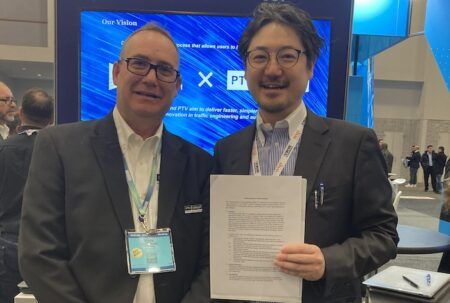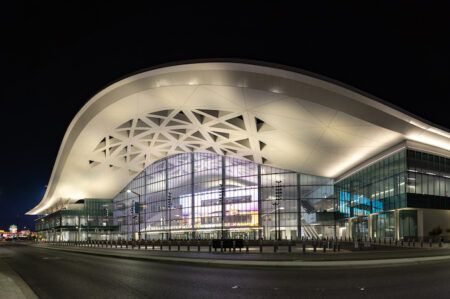Siemens ITS will unveil a new generation of traffic controller and signals at the Traffex 2017 show at the NEC in Birmingham, England next month, with the new system using ‘distributed intelligence’ to increase intersection uptime and reduce on-street installation and maintenance time.
The new Plus+ portfolio includes newly designed and dedicated on-street equipment and fully integrated design, configuration and installation tools, ensuring one of the most efficient traffic signal implementations currently available. Badged Plus+, the third-generation range of dedicated components for traffic signaling and control, includes: the ST950 controller unit; Helios signal heads; nearside indicators; wait indicators; and smartloops. With financial and personnel limitations, and increasing pressure on congested road infrastructure, on-street engineering time is a major challenge for transportation agencies and those responsible for traffic management. Due to the use of significantly fewer and lighter cables, and with the new approach making it possible to pre-assemble signals and use low-level access poles, installation engineers will spend less time working on-street, reducing risk and public disruption.
Siemens’ new Plus+ system no longer uses many individual connections between signal heads and controllers; instead it uses simple four-core cables and intelligent communications to reduce the installation effort, as well as saving valuable resources. Plus+ uses dedicated failsafe controllers, signal heads, and pedestrian indicators, as well as new smartloop modules, ensuring that the overall system is tolerant of individual component and cable damage, resulting in higher intersection availability and reduced disruption to the travelling public.
Plus+ and the dedicated failsafe components have been designed to be highly resilient to internal failure and external damage. If damage does occur to the traffic signals or controller, individual nodes can be ‘hot-swapped’, typically allowing maintenance to be undertaken while the traffic signals remain switched on. Combined with a design that is able to withstand short circuits that may occur during damage to in-street cables and a redundant power supply, Plus+ can make sure the intersection is kept available and operational during repairs or predictive maintenance. The Plus+ system also prevents a number of other problems that can prove costly or in some cases dangerous, as it only supports ELV (extremely low voltage), eliminating electric shock risks on-street for both the engineer and the public, while inbuilt system self-checking allows protection against false signals being shown on-street due to error or deliberate acts.
According to Keith Manston, head of product management at Siemens, the Plus+ system uses advanced technology to distribute intelligence and control around the intersection, rather than it all being centrally located in the controller cabinet. “Much reduced cabling for data and power is at the heart of the new system, which is serially linked and fully supported by a complete range of dedicated components,” Manston explained. “The aim of the Plus+ solution is to offer significant reductions in on-street installation and maintenance time, improved safety, and yielding significant reductions in total deployment costs compared to conventional methods. But it’s not all about the technology. Plus+ will be safer and quicker to install, easier to maintain, and less expensive.”




